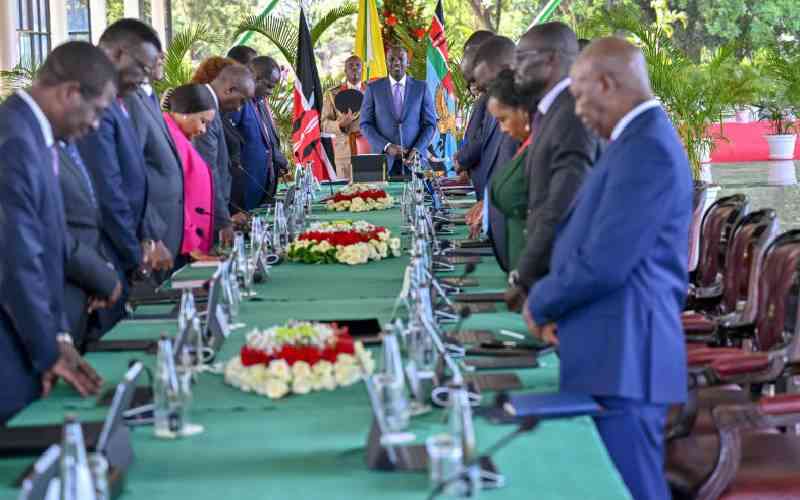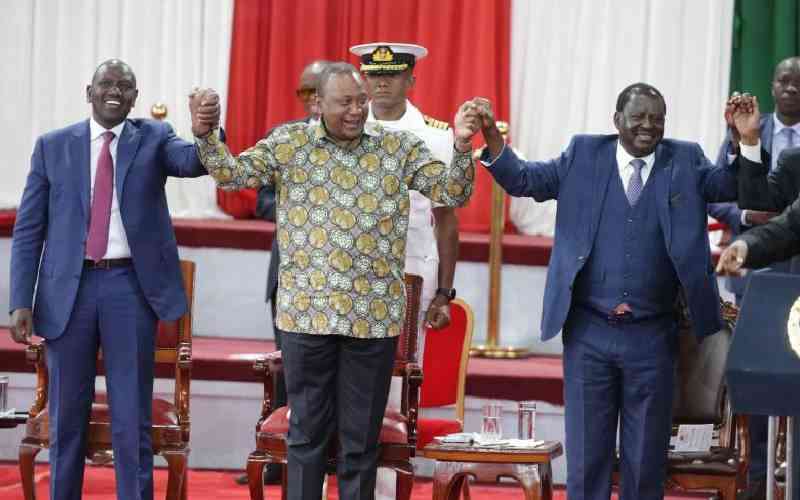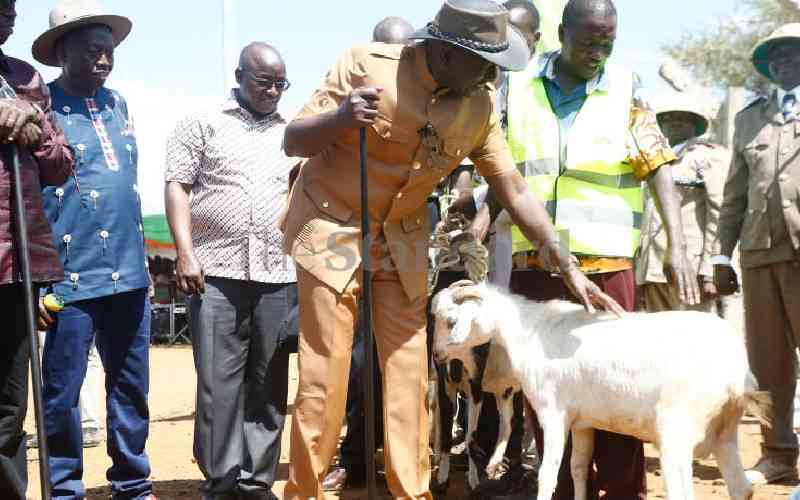Today, let’s be as frank as Isaac Ruto. The Bomet veteran told us ‘point blank’, that when it comes to promising votes, Central Kenya will “play all sorts of games”.
He reminded us about the nasty surprise Musalia Mudavadi suffered in 2013. His own presidential running mate, who was from central Kenya, did not vote for him. Apparently, poor Mudavadi garnered a grand total of zero votes at the primary school polling station where his supposed future vice president voted.
Isaac Ruto’s observation was that Central Kenya will promise votes, and then just three weeks before the election, they will decide where to vote and “not tell anyone.”
So an interpretation of this observation is this: It is only when the election results are announced that the deluded candidate will see the extent of the ‘CentralKenya Swindle’.
This is the same ‘sneaky’ voting block that William Ruto is intending to inherit come 2022.
Will he fall victim to the ‘Central Kenya Swindle’, or will he beat the odds like Tom Mboya did in the 1961 elections? Mboya was running against Dr Munyua Waiyaki in an electorate that was over 67.5 per cent Kikuyu. Mboya won with 77.5 per cent of the vote.
But there is a disclaimer. The outcome was as a result of ‘The politics of Utility’ and not the ‘Politics of Ethnic Identity’. David Goldsworthy in his book, Tom Mboya: The Man Kenya Wanted to Forget rightly notes that Mboya was a strong trade unionist who represented interests that cut across tribe.
Others in national elections were not that lucky. In every election since 1992, the vote-rich central Kenya block has shown a distinct trend. And the voting arithmetic of the central Kenya region has never deviated from this pattern. Past presidential candidates like Kijana Wamalwa and Simeon Nyachae only managed 3,000 votes each in the 1997 and 2002 elections respectively. In 2002, the firebrand politician James Orengo was given a paltry 1,000 votes. Even the formidable Raila Odinga in 2002 garnered 6,000 votes out of a possible one million plus.
But regardless of this history, a ‘non-central kenya’ aspirant’s fortunes could be made positive. The condition is that a ‘gatekeeper’ from the region strongly and explicitly supports them. Here, once again, things do not look good for the DP on two counts.
The first problem is that the President has been ‘radio silent’ on endorsement since 2017. The second problem is that even if he were not silent, history has no precedent to show that an endorsement would break the region’s voting pattern.
In fact, the opposite may be true. A more devastatingly embarrassing swindle may result from an endorsement. The third problem is that the DP’s relationship with the President appears to have actually soured. This means that not only will he not get an endorsement for the central voters, an alternative to him may be offered to the voting block.
Incidentally, State House just announced a presidential tour. And although we have been told that the tour is about development and not politics, it could end up being an opportunity to sell Raila Odinga’s candidature in Central Kenya for the 2022 election. Who knows?
For Ruto, prospects in central Kenya are looking bad, and overturning them will be a tall order. In fact, to overcome the bad prospects would be to be an anomaly, like Tom Mboya was 58 years ago.
To achieve the Mboya feat therefore, the DP needs the ‘politics of utility’: a real value proposition that is not based on ethnicity. But as things stand: the DP is set to suffer the Central Kenya Swindle, and get a big nasty surprise when the results are announced.
- The writer is a PhD candidate in political economy at SMC University. [email protected]
Stay informed. Subscribe to our newsletter
 The Standard Group Plc is a
multi-media organization with investments in media platforms spanning newspaper
print operations, television, radio broadcasting, digital and online services. The
Standard Group is recognized as a leading multi-media house in Kenya with a key
influence in matters of national and international interest.
The Standard Group Plc is a
multi-media organization with investments in media platforms spanning newspaper
print operations, television, radio broadcasting, digital and online services. The
Standard Group is recognized as a leading multi-media house in Kenya with a key
influence in matters of national and international interest.
 The Standard Group Plc is a
multi-media organization with investments in media platforms spanning newspaper
print operations, television, radio broadcasting, digital and online services. The
Standard Group is recognized as a leading multi-media house in Kenya with a key
influence in matters of national and international interest.
The Standard Group Plc is a
multi-media organization with investments in media platforms spanning newspaper
print operations, television, radio broadcasting, digital and online services. The
Standard Group is recognized as a leading multi-media house in Kenya with a key
influence in matters of national and international interest.








